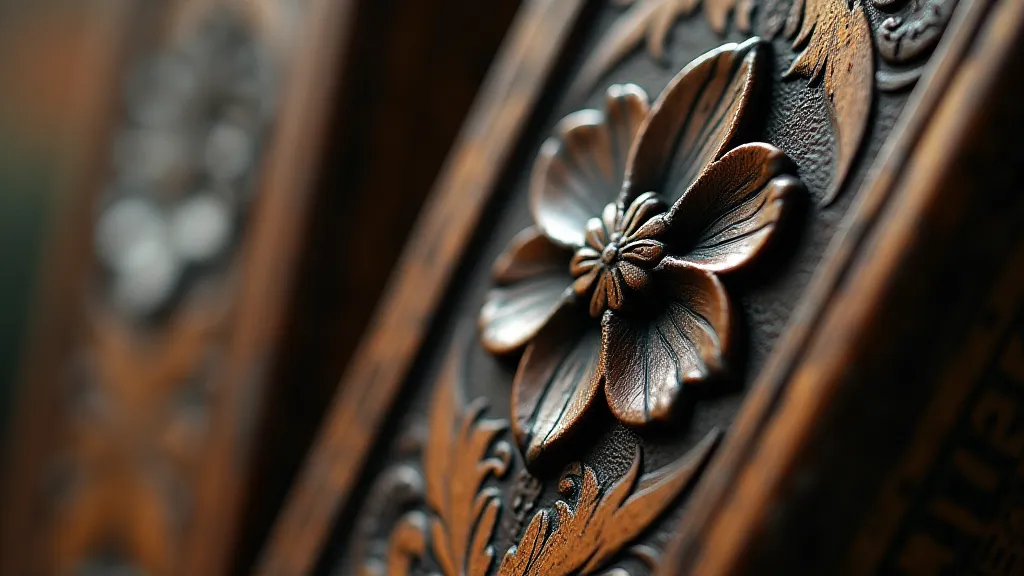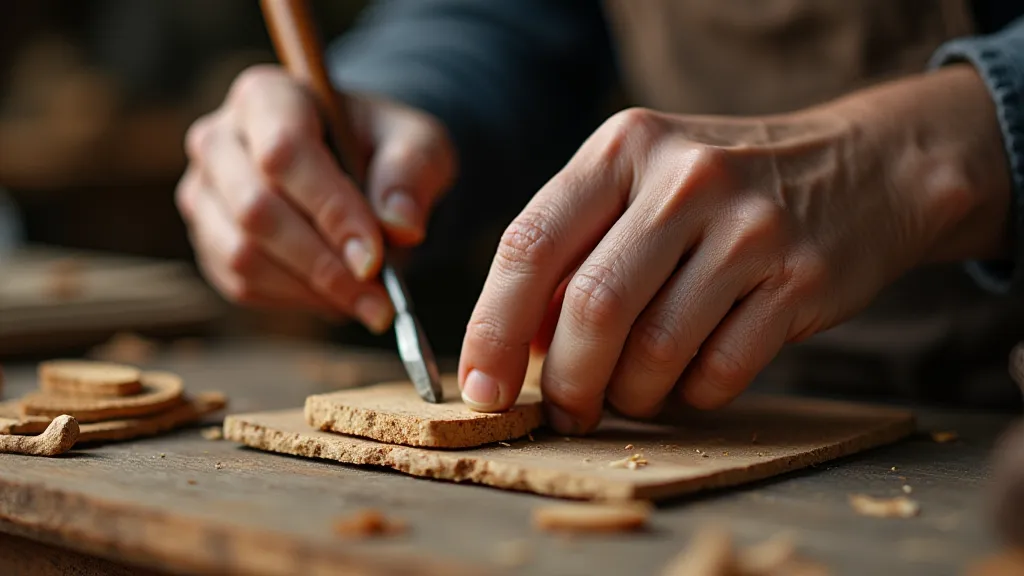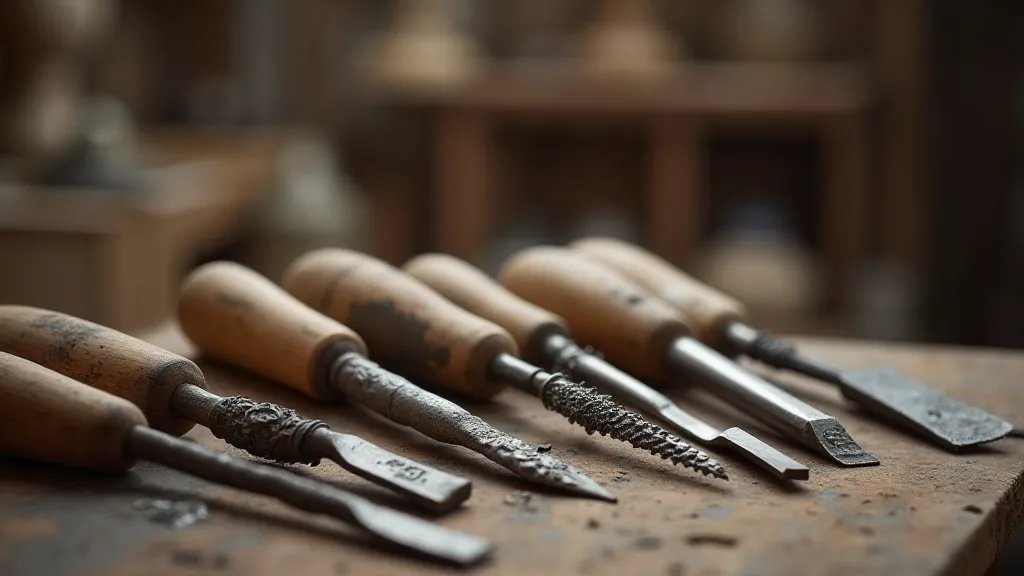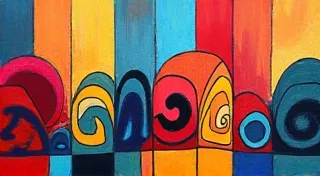The Sculptor's Soliloquy: Finding Meaning in Repetitive Carving Patterns
The scent of aged wood, the whisper of a chisel against grain, the almost hypnotic rhythm of the hand repeating a single motion – these are the hallmarks of wood carving, a craft steeped in history and often laden with unspoken narratives. While we admire the finished piece – the intricate panel, the whimsical figure – we rarely consider the journey, the solitary hours spent by the artisan, translating an idea, a memory, or a cultural symbol into tangible form. It's a process that transcends mere skill; it's a communion with the material, a meditation embodied in wood.
My own fascination with wood carving began, oddly enough, not with a chisel, but with an accordion. An antique Hohner, its bellows cracked and ivory keys yellowed, sat in my grandfather’s workshop. He wasn't a carver, but the accordion, with its meticulously hand-carved bellows ornamentation, captivated me. Those repeating floral patterns, each leaf a tiny, perfectly rendered echo of the last, seemed to breathe a silent song. I’d sit for hours, tracing the carvings with my fingers, imagining the craftsman, decades earlier, painstakingly carving each petal. It wasn’s just decoration; it felt like an act of devotion, a ritual performed with deliberate precision. That feeling, that sense of absorbed focus and quiet reverence, has stayed with me and informed my later appreciation of all traditional carving forms.

The Rhythm of Tradition: Regional Carvings and Their Stories
Across the globe, wood carving has evolved into a kaleidoscope of regional styles, each bearing the unique fingerprints of culture, environment, and available resources. In Norway, for instance, the tradition of *Rosemaling*—a decorative folk painting style often applied to carved wooden surfaces—features swirling, almost fantastical floral motifs. These aren’t simply pretty designs; they’re imbued with symbolic meaning, often representing fertility, protection, and blessings for the home. The carving itself, and the painting that adorns it, speaks of a deep connection to the land and the seasons. Similarly, in Indonesia, the elaborate wood carvings found on Balinese temples and homes depict scenes from mythology and everyday life, executed with astonishing detail and a profound sense of spiritual significance. The repetition in these carvings isn't monotony; it's a constant reaffirmation of the underlying narrative, a visual mantra that strengthens the connection between the viewer and the divine. The careful selection of wood itself also plays a vital role. The artisan’s choice of species, considering its grain, texture, and workability, contributes significantly to the final result – a consideration we explore in more detail in "From Branch to Bearing: The Cultural Significance of Wood Species Selection".
Consider the Black Forest cuckoo clocks of Germany. While the cuckoo mechanism itself is a marvel of engineering, the intricately carved figures and foliage adorning the clock case are equally important. These carvings, often depicting woodland creatures and traditional costumes, reflect the region’s rural heritage and a deep-seated appreciation for craftsmanship. The seemingly endless repetition of leaves, berries, and tendrils – carved by hand, generation after generation – isn't about churning out volume; it’s about imbuing each piece with a sense of authenticity and connection to the region's history.
The Artist's Inner Landscape: Meditation in Motion
The act of carving repetitive patterns can be profoundly meditative. The mind, initially focused on the technical aspects – the grain of the wood, the sharpness of the chisel, the precise angle of the cut – gradually settles into a state of flow. The rhythmic motion becomes almost automatic, freeing the conscious mind to wander, to reflect, to simply *be*. It's a form of active meditation, a way to escape the noise and distractions of the modern world and reconnect with a deeper, more primal sense of self. This process, repeated across generations and cultures, often reveals deeper patterns and proportions that have fascinated artists for centuries. You can delve into the underlying mathematical principles that influence many of these designs in "The Geometry of the Soul: Sacred Proportion in Wood Carving Motifs".
I've spoken with many carvers, from seasoned masters to enthusiastic amateurs, and the sentiment is consistent. The hours disappear. The world outside fades away. What remains is the wood, the chisel, and the quiet satisfaction of creating something beautiful, something lasting. There's a vulnerability inherent in this process, too. Each carving is a testament to the artist’s skill, but also a record of their attention, their patience, their dedication. Any mistake is visible, etched into the wood as a permanent reminder of imperfection. Yet, it’s often those imperfections – the slight variations in a repeated pattern, the unexpected knots in the grain – that give the carving its character, its soul. The legacy of these artisans and their place within society is a complex story, one that has shifted over time, as explored in "The Artisan's Shadow: Examining the Social Status of Wood Carvers Historically".

Restoration and Appreciation: Preserving a Legacy
Antique carved wooden objects – from furniture and architectural details to toys and decorative panels – are increasingly valued not only for their aesthetic beauty but also for their historical significance. The process of restoring these pieces is a delicate one, requiring a deep understanding of the original techniques and materials. Often, the most challenging aspect isn't the physical repair, but the ethical consideration of how much to intervene. To aggressively “correct” the imperfections can erase the very evidence of the craftsman’s hand, the very essence of what makes the piece unique. Maintaining the integrity of the original work means understanding not just the carving techniques, but also the cultural and artistic context in which it was created. This nuanced understanding requires a broader perspective on the history and social dynamics surrounding the creation of these works.
For collectors, the appeal of antique carved wood lies in its ability to connect us to the past, to the stories of those who came before. Examining a piece closely – tracing the contours of the carving with a fingertip, admiring the intricate details – is akin to holding a conversation with the artist, across the gulf of time. Each nick, each scratch, each subtle variation in the pattern tells a story, a whisper of the lives that touched it. Understanding the regional carving styles, recognizing the nuances of craftsmanship, adds another layer of appreciation for these remarkable objects. The choices made by the carver – the wood selected, the tools employed, the patterns chosen – all contribute to the piece’s overall character and historical significance.

The repetition in carving patterns isn't merely a technical element; it’s a language. A language of history, culture, and the human spirit. It’s a testament to the power of tradition, the beauty of craftsmanship, and the enduring human need to create, to connect, and to find meaning in the rhythm of the hand. The influence of earlier traditions, and the ways in which contemporary artists re-interpret and build upon them, demonstrates a dynamic interplay between the past and the present. The evolution of regional carving styles, shaped by changing cultural values and artistic trends, is a fascinating area of study. Moreover, examining the tools and techniques used by these artisans offers a window into the ingenuity and skill of generations past. Modern interpretations of traditional styles, blending ancient techniques with contemporary aesthetics, are enriching the world of wood carving, ensuring its continued relevance in a rapidly changing world.
The value of these carved pieces extends far beyond their monetary worth. They serve as tangible links to our heritage, providing insights into the beliefs, values, and artistic sensibilities of past generations. As we continue to explore the rich tapestry of wood carving traditions, we deepen our understanding of the human spirit and the power of artistic expression. The ongoing dialogue between tradition and innovation ensures that this ancient craft will continue to inspire and captivate audiences for generations to come. It is vital to acknowledge the environmental considerations associated with responsible wood sourcing and sustainable carving practices. The appreciation of wood carving traditions also promotes cultural preservation and fosters a greater awareness of the interconnectedness between humanity and the natural world.





